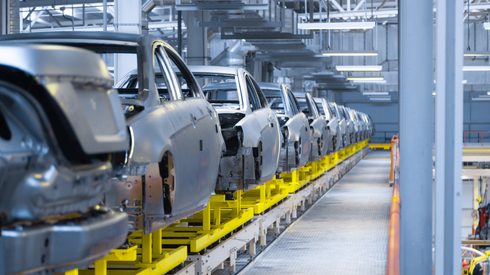In its commodity and economic outlook, published on Monday February 20, the miner said that “the reality is that the global price discovery mechanism for this critical building block of the energy transition is not functioning well”.
This concern around the functioning of the LME contract is shared by others in the industry, although there is currently no consensus on how to fix the issue.
The miner noted that, after the resumption of trading in late March 2022, following the price surge and subsequent suspension on March 8, low inventory and thin trading volumes provided “fertile ground for potential pricing discontinuities.”
A significant challenge facing the LME and its nickel price is the structural change seen within the nickel market, where production of ‘class two’ nickel products has far outpaced the growth of class one production, leading to a significant market split.
Class two nickel refers to material containing varying amounts of nickel and covers a range of products from nickel pig iron (NPI), used in stainless steel production primarily in China, to nickel sulfate, the key nickel product used in lithium-ion batteries.
The unifying feature of these products is that they do not meet LME specifications and are therefore not deliverable against the price.
“The surge in intermediates supply is the direct result of upstream innovation to meet the needs of the rapidly expanding battery value chain,” BHP said in the report. “It is also highlighting that reform of the LME’s metal delivery rules is long overdue. The LME short-squeeze episode highlighted vulnerabilities that had been building for years.”
According to Fastmarkets research data, global nickel production for 2022 was 3,011,000 tonnes. Of this production, more than 70% was class two nickel products, highlighting the imbalance between the market fundamentals and the global benchmark price.
BHP commented that, according to its data, class one material was “now below 30%” and, on current supply projections, “will only fall further.”
Inclusion of class two products
Calls for the inclusion of class two products into the LME benchmark contract are not new.
In the immediate aftermath of the contract suspension, many called for reforms including the inclusion of class two products in the LME price. But others in the industry expressed caution about this move, noting the difficulties around specifications that class two nickel products often encounter.
“The LME recognizes the continuing structural shift in the nickel market, driven by the dramatic growth in class two output,” an LME spokesperson said when asked about the comments made by BHP.
“[The LME is] committed to working with the industry to ensure that the LME’s offering meets the industry’s evolving pricing and risk management needs,” the LME spokesperson said, adding that the bourse’s “current focus is on rebuilding liquidity in our class one nickel contract. We continue to explore ways in which we might enhance the contract specifications, as well as how to best serve the needs of the expanding class two nickel market.”
For the short term, though, nickel markets are already pursuing adoption of new pricing mechanisms, decoupled from LME nickel prices.
This is particularly prevalent in nickel mixed hydroxide precipitate (MHP). Since December 2022, Fastmarkets has been collecting information on deals, offers and bids conducted on an outright pricing basis, a fundamental shift from the traditional method of payables to the LME price.
Fastmarkets assessed the nickel mixed hydroxide precipitate outright price, cif China, Japan and South Korea, at $17,500-18,500 per tonne on Friday February 17, up by $500 per tonne week on week following an increase in domestic Chinese nickel sulfate prices.
BHP sees surplus in nickel, looks to EV market for growth
The miner has highlighted that, despite the rapid increase in class two production in recent years, it expects the growth in such production to slow in 2023. But it expects there to be “solid” demand from the stainless-steel sector, and “another steep increase in electric vehicle [EV] battery requirements.”
Despite this demand picture, the miner is forecasting an overall surplus of nickel for the year amounting to about 200,000 tonnes, broadly in line with the Fastmarkets research forecast of a 220,000-tonne surplus in 2023.
And despite the recent growth in the adoption of lithium-iron-phosphate (LFP) batteries in China and the west, due to their affordability, BHP remains bullish that “ternary nickel-rich chemistries are expected to be the leading technology that powers them.”
The miner also highlighted the significance of the introduction of the Inflation Reduction Act (IRA) in the US and how it increases the significance of regions such as Australia. The US and Australia already have a free trade agreement meaning that Australia-origin product is qualified for import into the US under the IRA.
“The practical interpretation with respect to critical minerals value chains is not precisely clear at this stage,” the miner said, “[but] we expect that the direct, indirect and unintended consequences of the IRA will resonate for a considerable time to come.”
Visit our dedicated battery materials page to discover more insights on the factors at play in the industry in 2023 and beyond.





